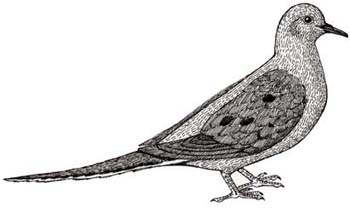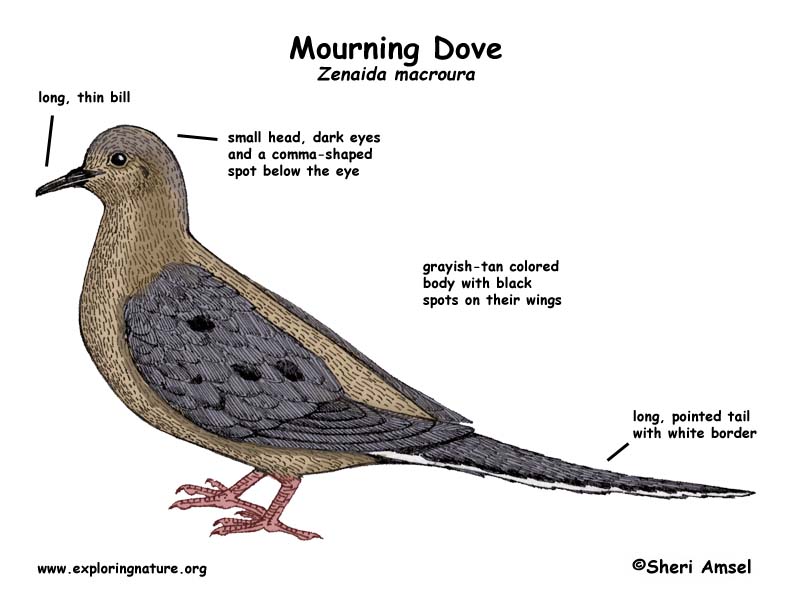

They breed in southern Canada throughout the U.S. to Central America and the Caribbean. In the winter they stay in all their breeding ranges except the furthest north and the open plains.
They are found in open places, like farms, fields, deserts, open woodlands, cities and suburbs.
They are grayish-tan with black spots on their wings. They have a long pointed tail with white outer edges. They can reach 13 inches long and have a small head with a comma-shaped spot below each eye.
They are active at dusk. They have a courtship display or spirals in the air with big dives and calls.
They eat mostly worms and some seeds.
They build a loose nest of twigs, pine needles, and grass in a tree or shrub. The female lays 2 white eggs.
Domain: Eukarya
Kingdom: Animalia
Phylum: Chordata
Subphylum: Vetebrata
Class: Aves
Order: Columbiformes
Family: Columbidae
Genus: Zenaida
Species: Z. macroura
When you research information you must cite the reference. Citing for websites is different from citing from books, magazines and periodicals. The style of citing shown here is from the MLA Style Citations (Modern Language Association).
When citing a WEBSITE the general format is as follows.
Author Last Name, First Name(s). "Title: Subtitle of Part of Web Page, if appropriate." Title: Subtitle: Section of Page if appropriate. Sponsoring/Publishing Agency, If Given. Additional significant descriptive information. Date of Electronic Publication or other Date, such as Last Updated. Day Month Year of access < URL >.
Amsel, Sheri. "Mourning Dove" Exploring Nature Educational Resource ©2005-2024. December 14, 2024
< http://www.exploringnature.org/db/view/158 >

